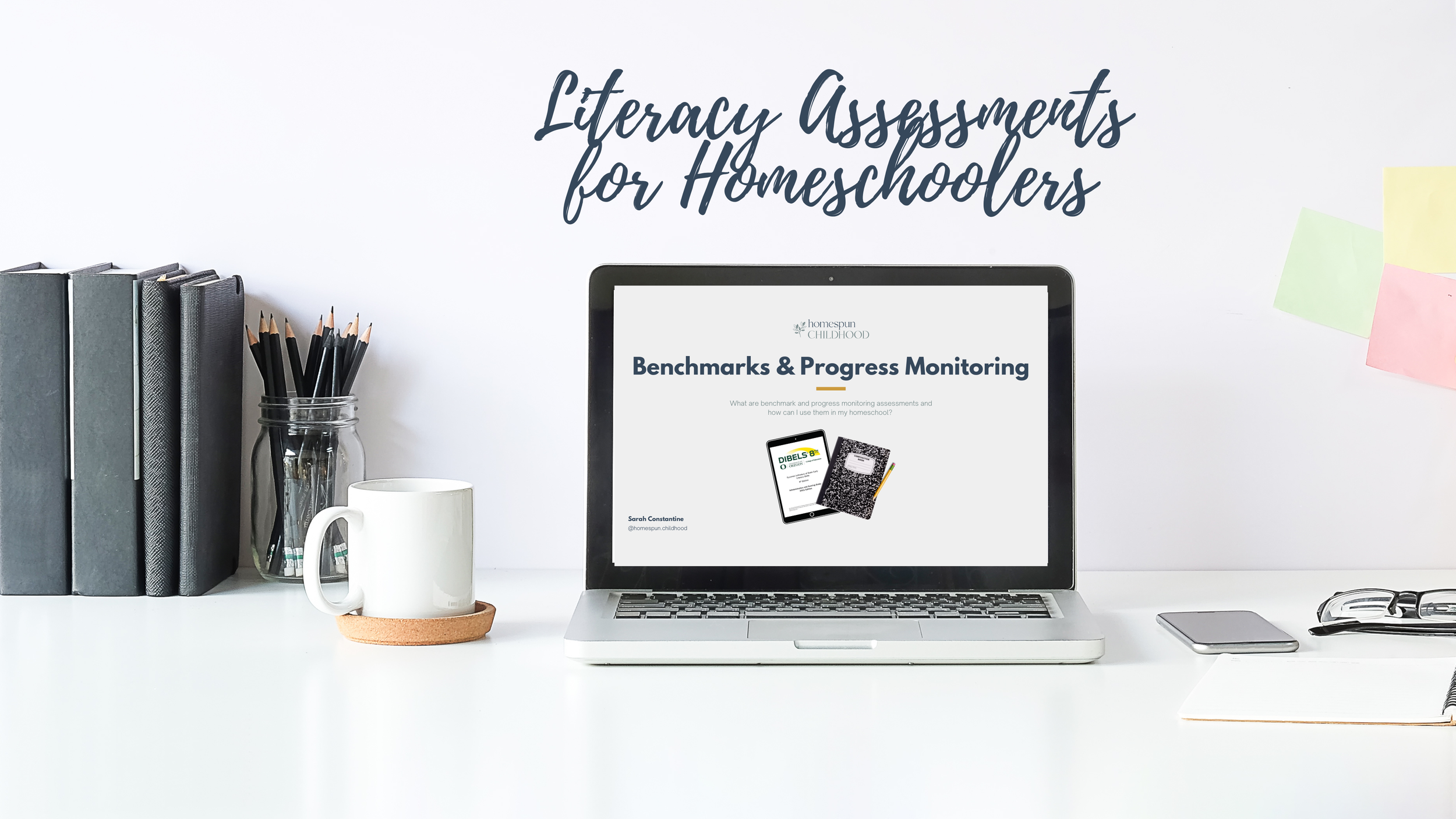literacy assessments
The word “assessment” has become a four-letter word of sorts in the homeschool world. This is unfortunate, as we know from research and best practices that our teaching should be diagnostic and prescriptive — meaning we’re following the child and their needs. Not what we think their needs are, but what they actually are (at least when it comes to explicit literacy instruction.
You have the curriculum; you teach the lessons, and you feel like your child is making progress. But you have doubts and question yourself; "Am I doing enough? Are they *really* getting it? I wish I knew how they were doing."
This is where quick, evidence-based benchmark assessments come in. Schools across the country *should* use universal screeners to identify kids at risk in reading instruction. We can use these at home, too, and we have an advantage — we know the child inside and out.
It can be easy to step back and see the progress over the years. But on a day-to-day basis, it's much harder to gauge how your child is progressing and measure the effectiveness of a curriculum.
Benchmark assessments can provide the peace of mind that your child is making appropriate progress. They can confirm concerns that a curriculum or approach isn't a great fit. They give you data points to act on. And they are relatively simple and quick to implement.
Check out my new course, Literacy Assessments for Homeschoolers. In this self-paced course, I will teach you how to use benchmark assessments, phonics surveys, and spelling inventories to guide your literacy instruction as a homeschool parent.



